The ocean’s most delicate life in reefs is dying!
Be it The Great Barrier Reef or the reefs in Maldives or Philippines!
Allover the world, disasters such as global warming, industrialisation of the coastline, mass dredging, offshore dumping of sludge and warming oceans are causing a mass die-off of corals! One can only imagine the repercussions this would have on the life dependent on it, both human and marine.
Soon, it seems, the only corals that might mesmerise us shall be the ones found in Disney’s movie ‘Finding Nemo’ or ‘Little Mermaid’! The stinging anemone, the vibrant colors of the corals and the fish living in there, maintaining coral ecosystems, the delicate balance of life under sea –
THIS WORLD IS IN CRITICAL DANGER!
‘The total diversity of life found in, on, and around all coral reefs is up to 2 million species!!’

WHAT IS A CORAL?
A Coral is actually a very simple organism, consisting of a stomach topped by a tentacle-bearing mouth, also known as a polyp. At night, the polyps extend their tentacles to sting and ingest tiny organisms called plankton and other small creatures.
Identical polyps live together in thousands and form a coral colony. Each polyp excretes a calcium carbonate exoskeleton beneath it and, over long periods of time, the skeletons of many coral colonies add up to build the structure of a coral reef. Many other species – fish, invertebrates, algae and microorganisms – make their homes on and around this reef.
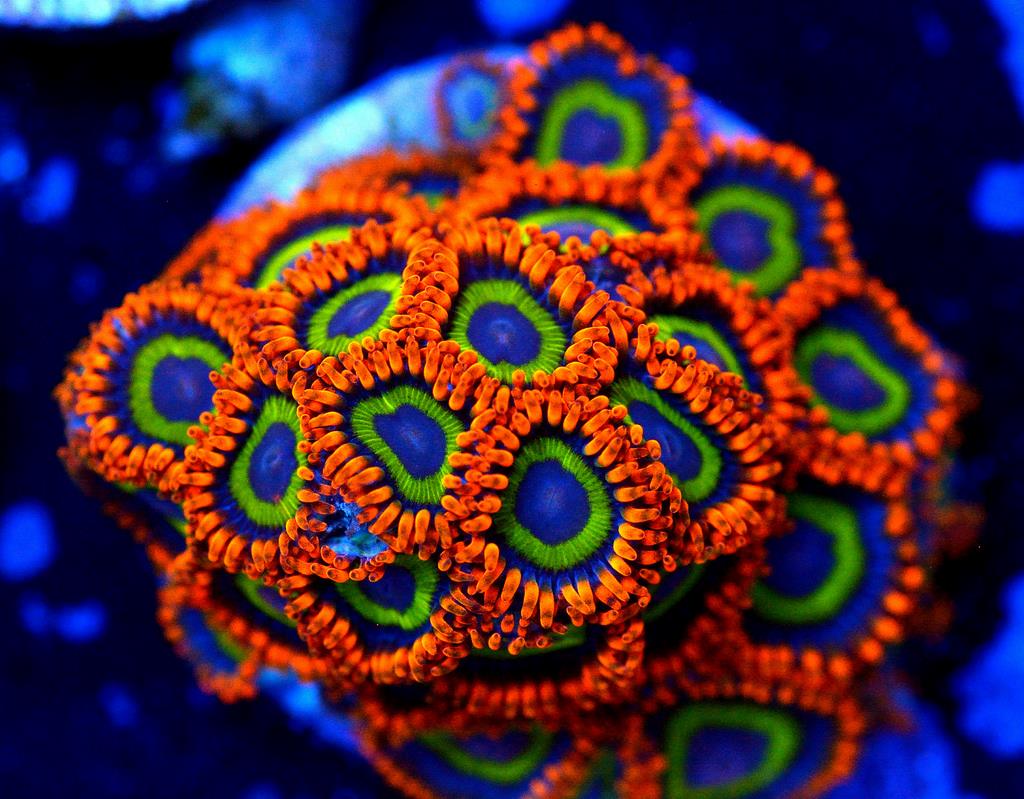
PC:ReefNation.com
Reefs only occur in shallow areas that are reachable by sunlight because of the relationship between coral and algae. Various types of microscopic algae, known as Symbiodinium or ‘zooxanthellae’, live inside of the coral, providing them with food and helping them to grow faster. This algae synthesizes sunlight and carbon dioxide to create nutrients for the reef. It also gives the coral its colors.
‘In many ways, reef-building corals are animals that act like plants – they stay in one place and get some of their energy from the sun.’
THE DEATH OF THE GREAT BARRIER REEF
Sadly, the year 2016 saw the death of The Great Barrier Reef! It has significantly deteriorated, spelling doom for countless species of underwater fauna that calls it home. Though the officials are trying to manage the damage with emergency measures yet all the factors have resulted into massive die-off that has turned this once-beautiful and vibrant 1,400-mile habitat into a ghastly white boneyard.
The symbiosis between the corals and zooxanthellae thrives only within a narrow temperature band. If the water temperature around the reef gets high, the algae’s metabolism goes into overdrive and starts producing toxins. The food itself turns into poison, resulting in polyps to recoil and expel the algae from their tissue, leaving the coral with a ghastly “bleached” appearance. At that time, the coral becomes extremely vulnerable and becomes more susceptible to deadly diseases, slowly fluorescing, turning bleached white and then ultimately dying.
“The most horrifying part was that we just absolutely stank of rotting animals. That’s when you really realize that reefs are made up of billions of animals”
Richard Vever, renowned underwater photographer, told Time, post his dive in the Great Barrier Reef
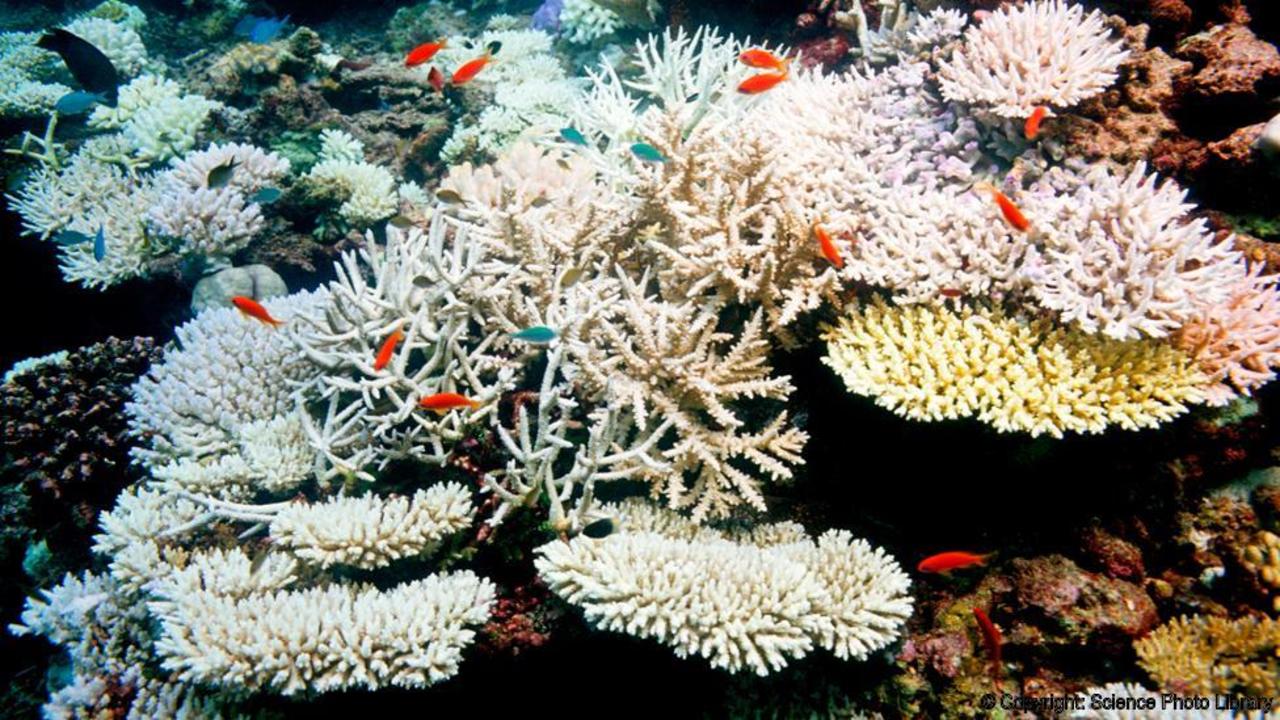
PC: BBC.com
A combination of fossil-fuel-driven global warming and El Niño saw the reef’s water temperatures skyrocket, which caused the worst mass coral bleaching the reef had ever faced. There was no temperature respite for that coral to bounce back after the bleaching, and almost one quarter of the reef’s corals died, including two-thirds of the corals in the 700km northern section of the reef.
Although policies have been applied against the increase level of degrading Reef, funds provided are not enough and water quality targets are not as brawny. Furthermore, the government’s response plan to the worst-ever bleaching event on the reef says global warming was the cause but doesn’t include any action or new funding to address it. Worse still, the Australian governments have approved the Adani-mega coalmine which would put the Great Barrier Reef in grave peril.
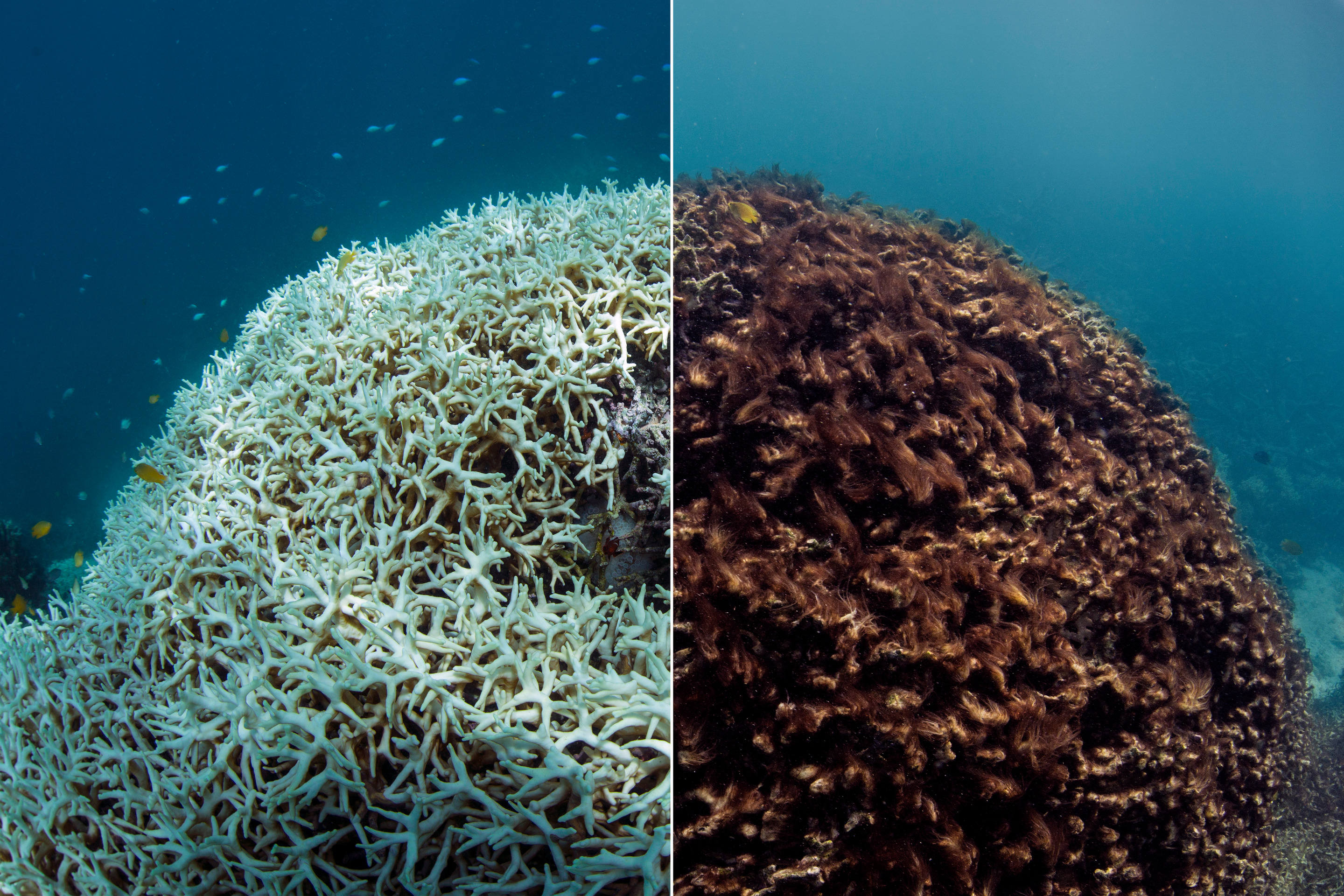
PC:Globalcoralbleaching.org
To understand the situation, in the beginning of 2016, several scientists from all over the world went to see how the “Dying-Reef” impacts the regions around the reef. The Lizard Island is the worst-hit area with major destruction. They have added that if the current trajectory of global warming continues, even if measures are taken to control the water pollution, the reef will suffer terrible bleaching every two years by the 2030, at an increasing rate.
In fact, an alarming new study suggests that “by 2050 more than 98% of coral reefs will be afflicted by ‘bleaching-level thermal stress’ each year”.
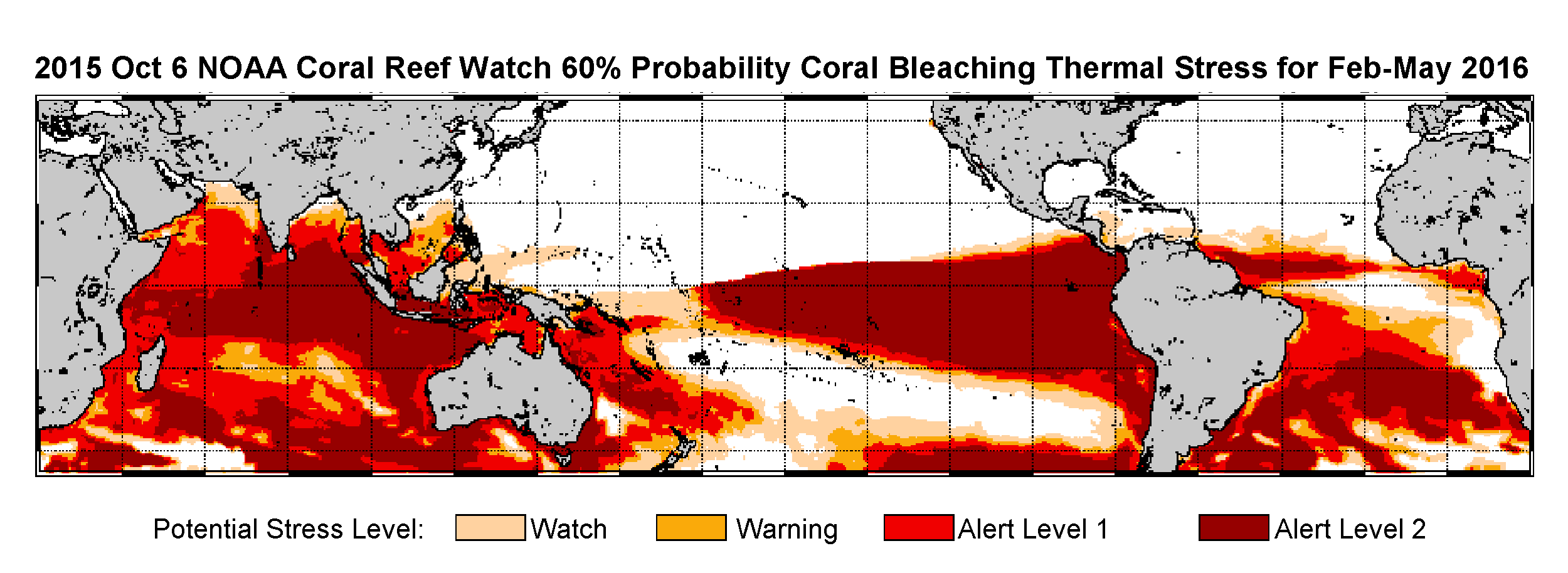
PC: National Oceanic and Atmospheric Administration
HOW DOES THIS IMPACT US?
Coral reefs are significant to the planet. Though the total area of the world’s coral reefs amounts to less than one quarter of 1% of the entire marine environment, yet they are a home to 25% of all marine life, and provide spawning, nursery, refuge and feeding areas for about a quarter of the ocean’s fish.
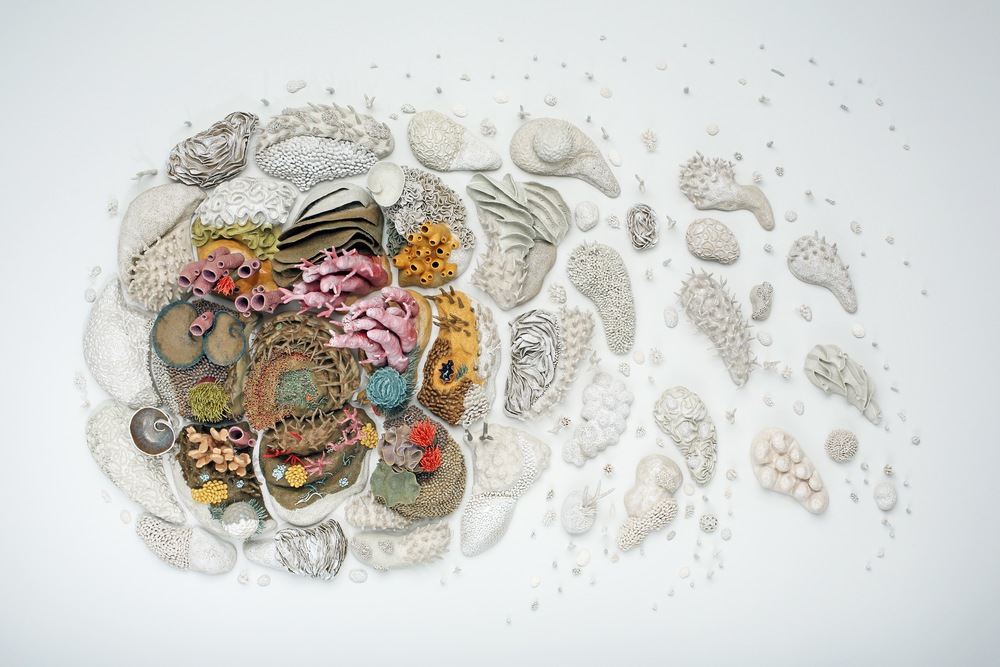
Our Changing Seas III by Courtney Mattison – 2014
They play an important role in:
- protecting the coastlines from the damaging effects of waves, especially during storms, hurricanes, typhoons, and even tsunamis
- preventing coastal erosion, and thus avoid flooding and loss of property on the shore
- providing a source of nitrogen and other essential nutrients for marine food chains
- assisting in carbon and nitrogen fixing
- help with nutrient recycling
Coral reefs also provides support to
- Fishing industry – It is a source of livelihood and revenue for local communities as well as national and international fishing fleets. Approximately one billion people are dependent on coral reefs for food and income from fishing.
- Tourism – Coral reefs are, especially in The Great Barrier Reef, a great magnet for tourists, generating more than 1.5 billion dollars every year for the Australian economy.
- Medicine – Coral reefs are often termed as the “medicine cabinets of the 21st century “. Corals are, after all, stationary animals. In order to protect themselves against predators, many kinds of corals have evolved chemical defences. They are a source of new medicines that being developed against diseases such as cancer, Alzheimer’s and many more.
Is there hope??
It is a bleak situation indeed. Corals need time to recover. And even if they begin recovery, scientists are afraid that the rising temperature of the ocean might undo any recovery.
The government need a response to biggest long-term threat to the reef, i.e, global warming that includes scrapping the Adani coalmine and banning all new coalmines, moving to 100% clean energy to avoid the additional in-danger listing of the Reef. But most importantly, along with the leaders, it is high time that every individual should step up and do their part.
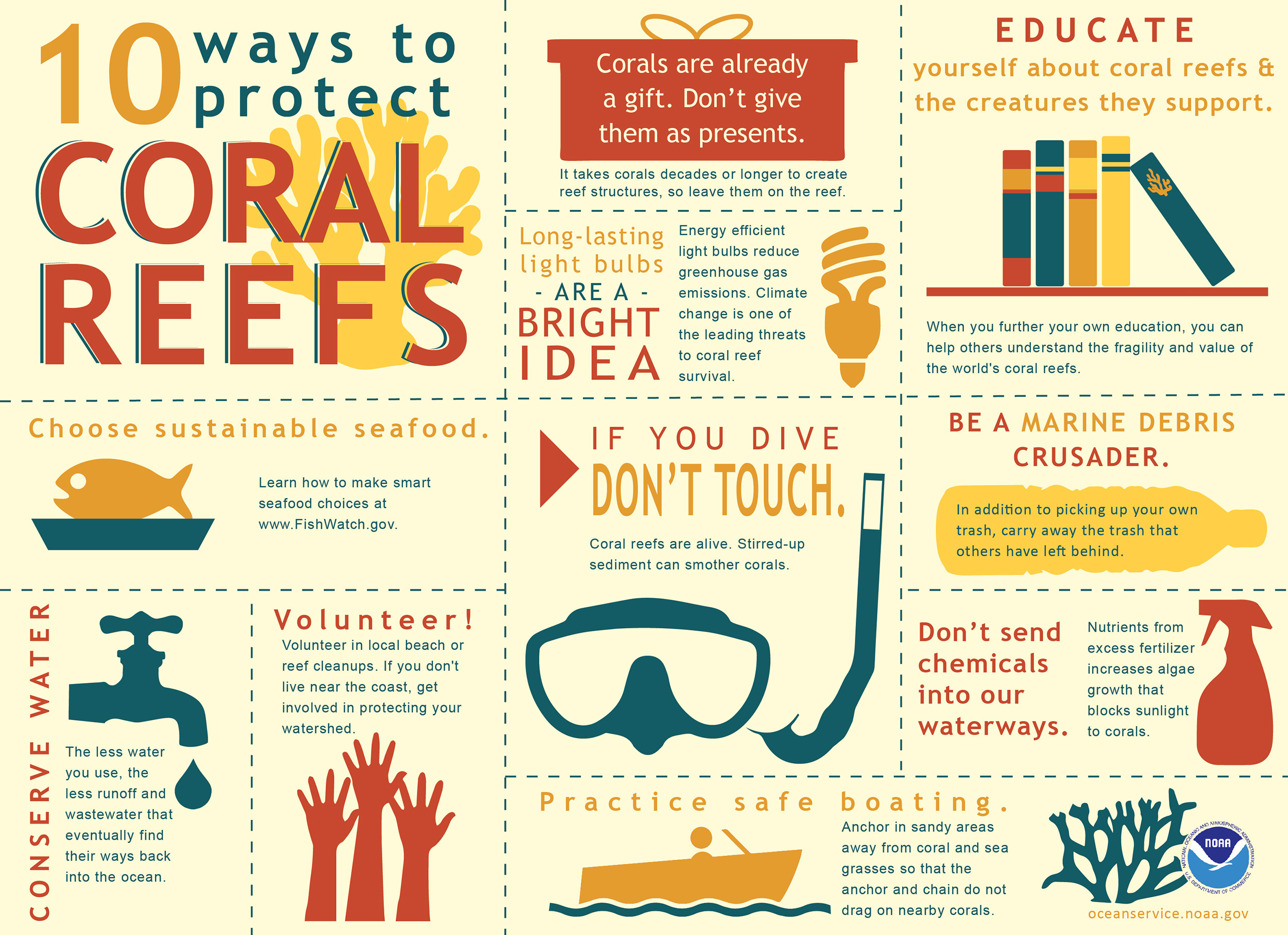
Infographic: Oceanservice.noaa.gov
Urgent solutions are needed to fix water pollution from land clearing and agriculture. Ambitious water quality targets, including an 80% cut to nitrogen pollution by 2025 have been implemented but report after report shows that by the causality of people about this problem, the target is far yet to be met. Emergency steps need to be taken by all countries, especially Australia in order to help make reefs more resilient to bleaching.
- limit fertilizer and sewage runoff that further damage the coral.
- avoid overfishing key herbivores like the sea urchins, rabbitfish that nurture the reefs by clearing away excessive algae.
- rerouting boats around them and restricting construction in the coastal areas near them.
- reducing our carbon-dioxide emissions
With ceaseless efforts and planning, we might yet save the corals and marine world, AND IN TURN SAVE OURSELVES!
Show your support!
Share and spread awareness about this global catastrophe.
